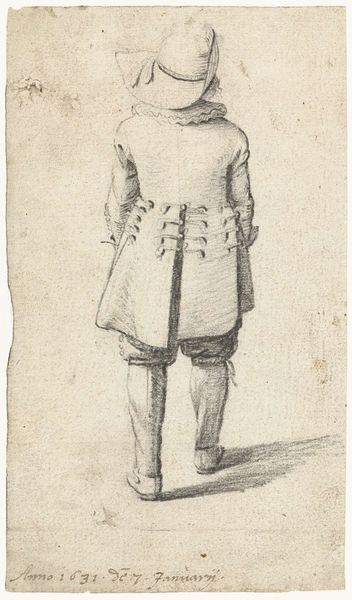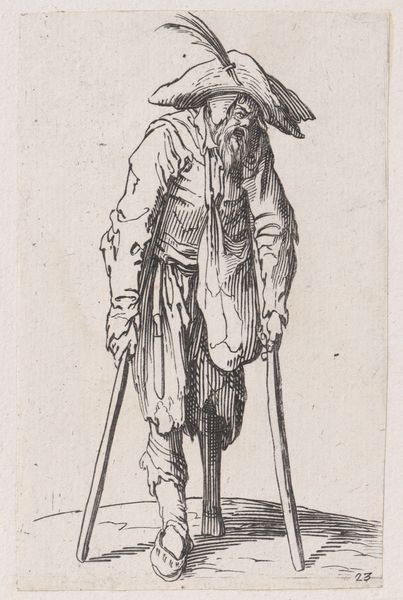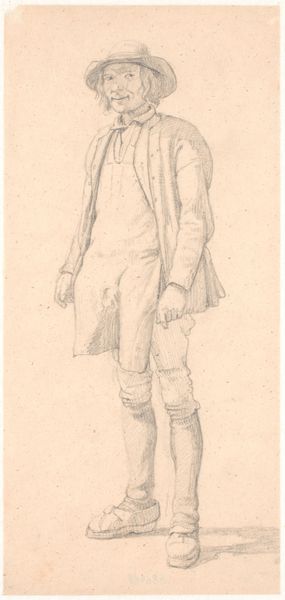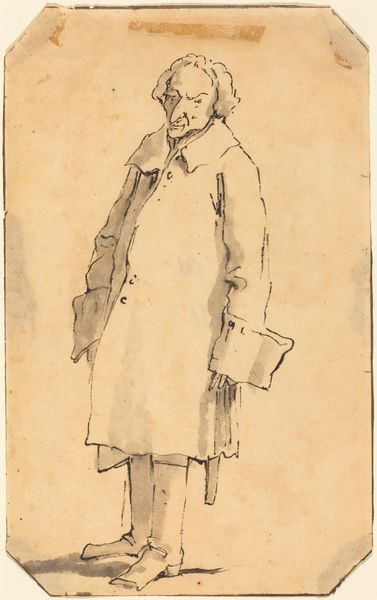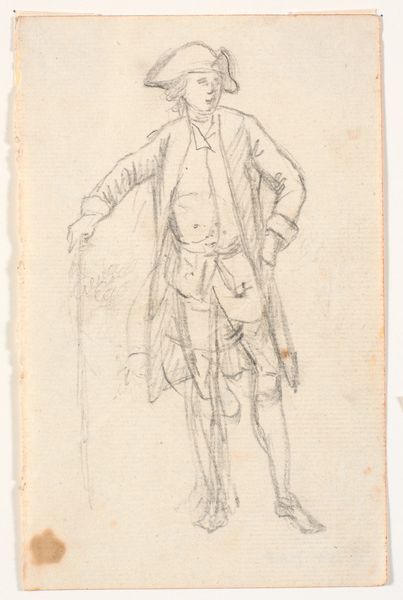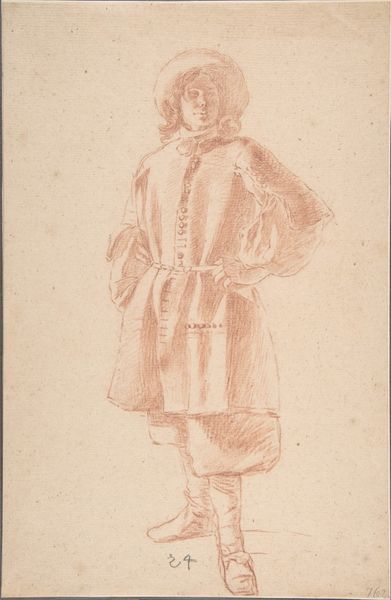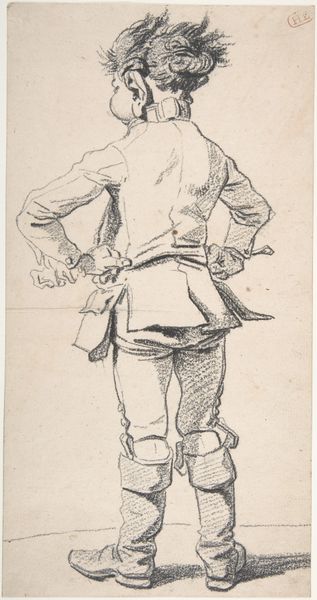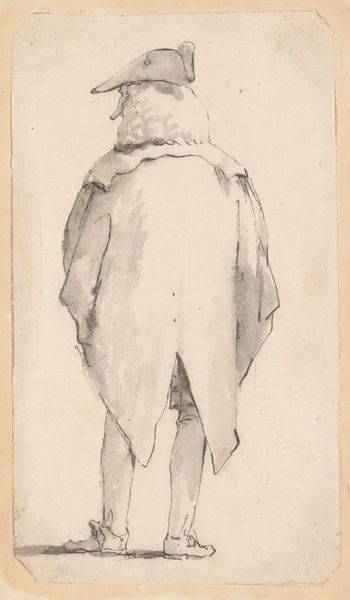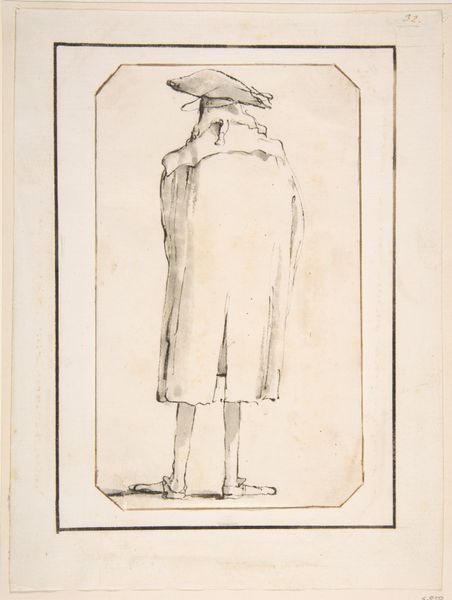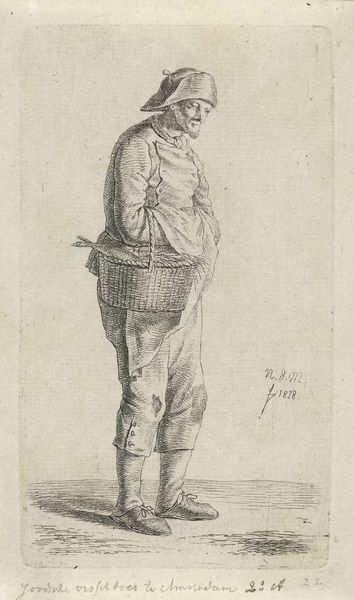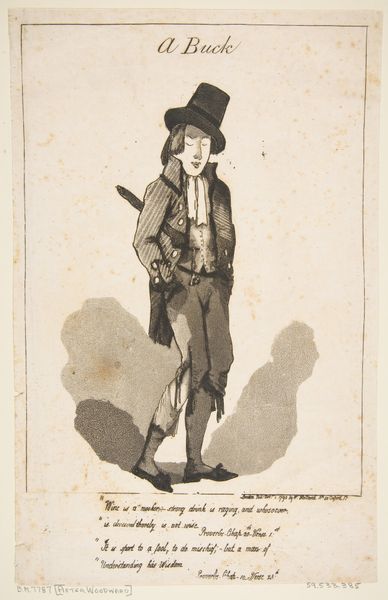
Rückenansicht eines stehenden Bauern in Kniehose,weitem Mantel und Hut c. 1771 - 1772
0:00
0:00
drawing, paper, graphite
#
portrait
#
pencil drawn
#
drawing
#
pencil sketch
#
figuration
#
paper
#
graphite
#
sketchbook drawing
Copyright: Public Domain
Editor: This is Georg Melchior Kraus' "Back view of a standing farmer in breeches, wide coat and hat" from around 1771. It's a graphite drawing on paper. There’s something so solitary about this figure, just standing there with his back to us. What can you tell me about the context of an image like this? Curator: Well, consider the period. Kraus was working in the late 18th century, a time when ideas about the common man were evolving. While portraiture usually focused on the elite, here we see a study of a rural figure, elevating, in a way, a common person. It's significant that Kraus chooses to depict him from the back. What do you make of that choice? Editor: It almost feels anonymous. Less about individual identity and more about… representing a social class? Curator: Precisely. The lack of a face pushes us to consider the figure not as an individual but as a representation of the rural populace, which was becoming increasingly important in philosophical and political discourse at the time. The French Revolution wasn't far off, and there was a growing fascination with the "natural" state of man. How might the social climate have shaped its creation and reception? Editor: I guess showing him from the back allows viewers to project their own ideas and interpretations onto him more easily, which may invite a conversation on social and cultural views on farmers and laborers during that time. Also, it allows the audience to place themselves in his shoes, thinking about looking toward his fields. It's interesting that something like a sketch can have so much social commentary wrapped up in it! Curator: Indeed! The "politics of imagery" aren't always overt, but embedded within the choices artists make. And museums and galleries further shape those narratives, even today. Thanks for making me think about this sketch again. Editor: Thank you, too. It’s fascinating how a seemingly simple image can reveal so much about a particular time and its values.
Comments
No comments
Be the first to comment and join the conversation on the ultimate creative platform.


